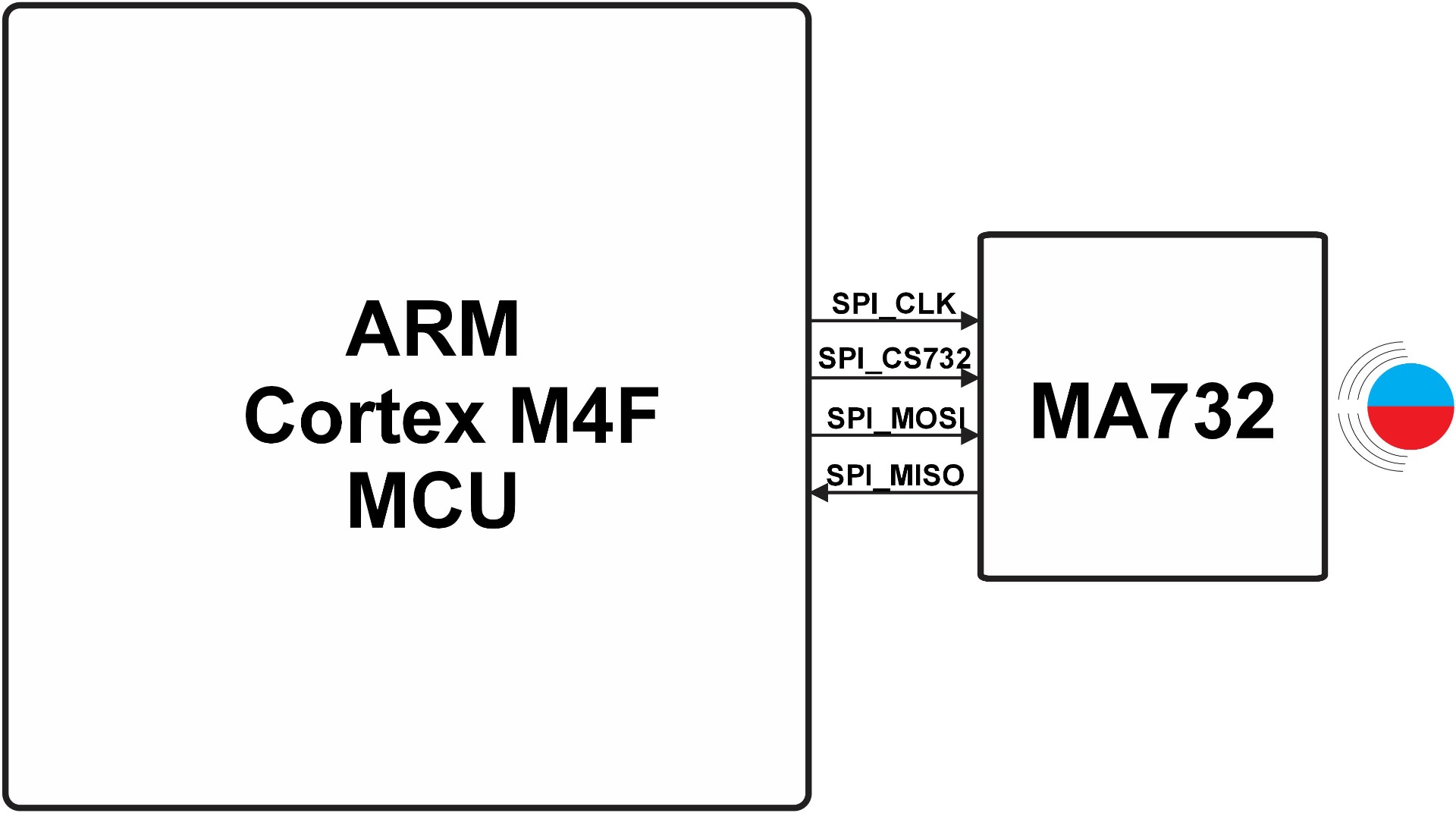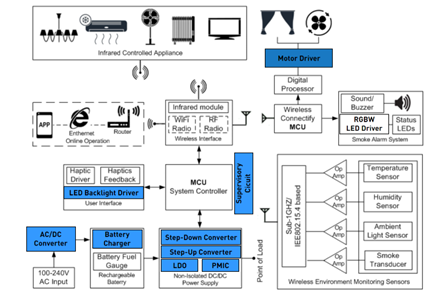Smart Controls
In the evolving realm of motor technology, the integration of smart controls emerges as a significant trend, transforming the operation and management of electric motors. Transforming motor functionality, efficiency, and adaptability, smart control systems leverage advancements in electronics, communication, and software.
Referring to the incorporation of intelligent control systems, smart controls in electric motors can monitor, analyze, and adjust motor operation. These systems optimize motor performance in real-time based on various operational parameters and external conditions, utilizing sensors, microcontrollers, and advanced algorithms.
Components of Smart Control Systems
Sensors: To monitor essential parameters such as speed, torque, temperature, and vibration, smart motor systems are equipped with various sensors. Providing vital data, these sensors are used for real-time feedback and control.
Microcontrollers and Processors: Microcontrollers and processors, at the core of smart control systems, handle sensor data processing and execute control algorithms. These elements facilitate swift and accurate modifications to motor operation.
Contemporary smart motor systems frequently incorporate communication interfaces, enabling their integration into larger industrial control systems or Internet of Things (IoT) networks. This connectivity allows for remote monitoring and control, as well as data collection for analytics and predictive maintenance purposes.
Benefits of Smart Controls
Enhanced Efficiency: Smart controls can notably enhance energy efficiency, thereby decreasing operational costs and environmental impact, through continuous monitoring and adjustment of motor operation.
Predictive Maintenance: Before they result in failures, smart motor systems have the capability to anticipate and identify potential issues. Reducing downtime and prolonging motor life, these systems can proactively schedule maintenance activities through the analysis of data trends and patterns.
Adaptability and Flexibility: Motors can dynamically adapt to varying loads and operational conditions through the use of smart controls. In applications where load conditions frequently change or are unpredictable, this adaptability proves particularly advantageous.
Improved Performance: Smart motor systems can enhance overall performance by exercising precise control, providing optimal speed, torque, and power as demanded by the application.
Applications in Industry
Encompassing manufacturing, automotive, HVAC (heating, ventilation, and air conditioning), and renewable energy systems, applications of smart motor controls span across diverse sectors. Increased productivity, energy efficiency, and minimized environmental footprint result from the capacity to optimize motor performance within these sectors.
Future Developments
We can anticipate deeper integration of AI (Artificial Intelligence) and machine learning algorithms into smart motor systems with technological progress. Within the industrial and consumer product space, these advancements will facilitate more sophisticated decision-making capabilities, autonomous operation, and improved interaction with other smart systems.
Energy-Efficient Designs
Significant innovations in energy-efficient designs within the realm of electric motors have emerged due to the global push towards sustainability and reduced environmental impact. These advancements not only concentrate on improving motor efficiency but also on rethinking motor design to reduce energy consumption and optimize performance throughout their lifecycle.
Principles of Energy-efficient Design: A holistic approach to energy-efficient motor design involves focusing on minimizing inherent losses, improving material utilization, and optimizing the electromagnetic and mechanical features of the motor. Minimizing inefficient heat generation and energy usage, the objective is to achieve greater conversion rates of electrical energy into mechanical energy.
Innovations in Material Use:
- High-grade Electrical Steel: The primary additive element in this iron alloy is silicon, replacing carbon. Generating precise magnetic characteristics, the specific formulation is customized: minimal hysteresis area results in low power loss per cycle, decreased core loss, and increased permeability. Eddy current losses, a significant contributor to motor inefficiency, are reduced by utilizing high-grade electrical steel in stators and rotors. These losses are further decreased by advanced laminations and coatings.
- Rare-earth Magnets: Known as a rare-earth magnet, a strong permanent magnet is made from alloys of rare-earth elements. Rare-earth magnets, the strongest kind of permanent magnets created, were developed in the 1970s and 1980s, yielding magnetic fields considerably more potent than those of other types like ferrite or alnico magnets. Ferrite or ceramic magnets usually display fields ranging from 0.5 to 1 Tesla, whereas rare-earth magnets typically generate magnetic fields surpassing 1.2 Teslas. Particularly in compact motor designs, the inclusion of rare-earth elements such as neodymium in permanent magnet motors enhances flux density, leading to a substantial increase in efficiency.
Advanced Winding Techniques: The emerging hairpin technology relies on solid, flat copper bars inserted into the stator stack, unlike conventional winding technologies. The enameled copper wire bent into a U-shape, resembling the geometry of hairpins, forms these copper bars, also known as hairpins.
Aerodynamic and Cooling Enhancements: To manage heat more effectively, energy-efficient motor designs integrate advanced cooling techniques and aerodynamic features. The utilization of thermal interface materials that improve heat dissipation without notably increasing energy consumption could involve enhanced fan designs and integrated cooling channels.
Optimization Through Computational Tools: Before physical prototypes are constructed, the detailed analysis of motor designs is facilitated by the utilization of computational modeling and simulation tools. Resulting in more efficient motor designs, such optimization permits the enhancement of electromagnetic fields, thermal management, and distribution of mechanical stress. Motorsolve, Maxwell, Jmag, MotorXP, Emdtool, and Femag, are some well-known software packages.
Integration with Drive Technologies: When integrated with advanced drive technologies like variable frequency drives (VFDs), electric motors experience a significant enhancement in efficiency. Ensuring that the motor operates at optimal efficiency points throughout its range of operation, these drives adjust the operating speed and torque of the motor according to the load requirements.
Regulatory Influence: The development of energy-efficient motor designs has been driven by global standards and regulations, exemplified by the International Electrotechnical Commission (IEC) standards for motor efficiency. These regulations not only promote ongoing advancements in motor technology but also mandate minimum efficiency levels.
Transition Towards Sustainable Motor Solutions
A significant and essential shift within the field of electric motor technology is the transition towards sustainable motor solutions. The global focus on environmental sustainability, energy efficiency, and the reduction of carbon emissions is driving this movement. A broad range of innovations designed to minimize environmental impact while maximizing performance and efficiency is encompassed by sustainable motor solutions.
Definition and Scope: The development and application of motor technologies that are environmentally friendly, energy-efficient, and capable of reducing the overall carbon footprint of industrial and commercial operations refer to sustainable motor solutions. Improving motor efficiency, incorporating renewable materials, and integrating motors into renewable energy systems are all part of this process.
Key Components of Sustainable Solutions
High-Efficiency Motors: To attain higher efficiency ratings, motors are engineered with advanced magnetic materials, optimized windings, and enhanced thermal management. Significantly reducing energy waste and operational costs, these motors consume less power for the same output.
Use of Renewable Materials: Incorporating renewable or recycled materials into motor construction is increasingly becoming a focus in research and development. Such as certain rare-earth elements traditionally utilized in permanent magnet motors, reducing dependence on rare and non-renewable resources. Advanced Electric Machines (AEM) is one notable company actively engaged in utilizing renewable or recycled materials in the construction of electric motors. Based in the UK, AEM specializes in the development of electric motors that are free from reliance on rare-earth materials, which are frequently condemned for their environmentally damaging mining processes and limited availability.
Integration with Renewable Energy: The integration of sustainable motor solutions with renewable energy sources is closely interconnected. The environmental impact of motor operation is further diminished by utilizing renewable energy sources like solar or wind power to power motors.
Lifecycle Analysis and End-of-Life Management: Taking into account manufacturing, operation, and disposal stages, sustainable design principles encompass the entire lifecycle of the motor. Design efforts are aimed at ensuring that motors are not only durable and recyclable but also easy to disassemble and repurpose once they reach the end of their operational life. Tesla, Inc. is one company making advancements in lifecycle analysis and end-of-life management for electric motors.
Benefits of Sustainable Motor Solutions
Reduced Environmental Impact: Sustainable motor solutions contribute significantly to the reduction of greenhouse gas emissions and pollution by enhancing energy efficiency and utilizing renewable resources.
Economic Advantages: Providing long-term savings by reducing energy consumption and operational costs, sustainable solutions may entail a higher initial investment. Offsetting initial costs, incentives and regulatory compliance also contribute to the equation.
Enhanced Corporate Responsibility: Through the adoption of sustainable motor technologies, companies actively contribute to global environmental goals, thus bolstering their corporate social responsibility image and meeting the sustainability expectations of consumers and stakeholders.
Challenges and Opportunities
Technological Innovation: Continuous research and innovation, including the development of high-performance materials that are both efficient and environmentally sound, are imperative to overcome technical challenges associated with sustainable motor solutions.
Regulatory and Market Drivers: Significant drivers for the adoption of sustainable motor technologies include government regulations and market demands. The transition towards greener solutions can be accelerated by policies that incentivize energy efficiency and sustainability.
Collaboration and Standardization: Collaboration across industries, governments, and research institutions is essential for achieving sustainability in motor solutions. Guiding development efforts, standardization of practices and benchmarks for sustainability is also beneficial.






直接登录
创建新帐号